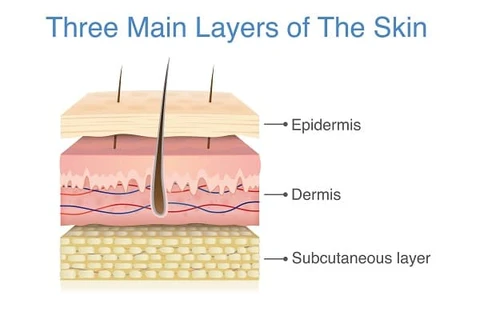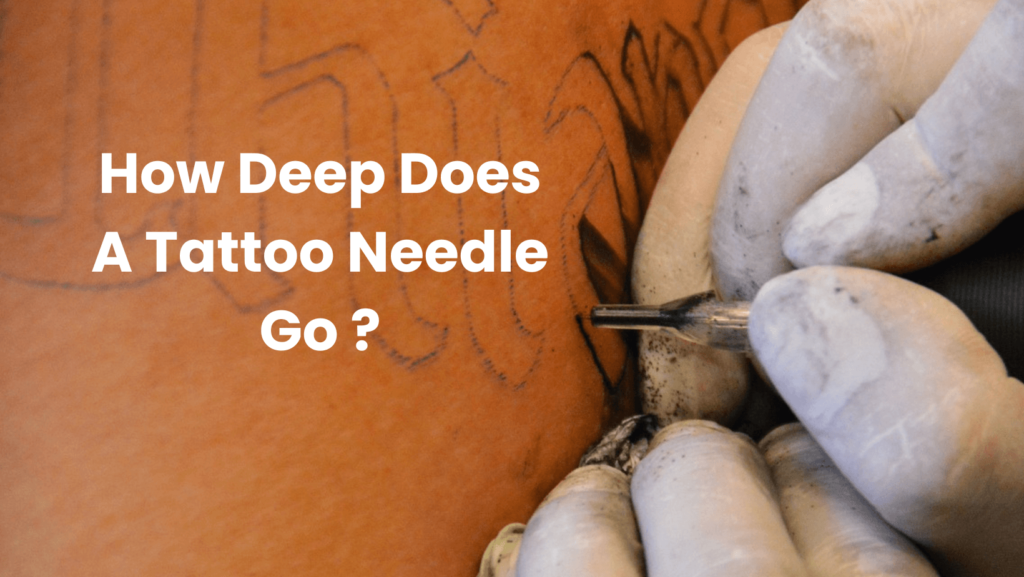Wiele osób jest zaciekawionych procesem tatuowania, zwłaszcza jeśli chodzi o głębokość, na jaką igła do tatuażu wbija się w skórę. Zrozumienie, jak głęboko wbija się igłę do tatuażu, ma kluczowe znaczenie zarówno dla profesjonalistów od tatuażu, jak i dla osób rozważających wykonanie tatuażu po raz pierwszy. W tym artykule zbadamy głębokość igły do tatuażu, aby zdemaskować ten proces.
Warstwa skóry
Aby zrozumieć, jak głęboko sięga igła do tatuażu, konieczne jest podstawowe zrozumienie struktury skóry. Skóra składa się z trzech podstawowych warstw:
Naskórek: Najbardziej zewnętrzna warstwa skóry, naskórek, jest warstwą, którą widzimy, dotykamy i często zrzucamy. Tatuaże nie są umieszczane w naskórku, ponieważ komórki w tej warstwie są stale zrzucane, co spowodowałoby szybkie wyblaknięcie tatuażu.
Skóra właściwa: Skóra właściwa jest środkową warstwą skóry i jest celem umieszczenia tatuażu. Jest ona znacznie bardziej stabilna niż naskórek i stanowi solidną podstawę dla tuszu. Igły do tatuażu przenikają przez naskórek i docierają do skóry właściwej, gdzie osadzają tusz.
Tkanka podskórna: Pod skórą właściwą znajduje się tkanka podskórna, która składa się głównie z tłuszczu i tkanki łącznej. Warstwa podskórna nie odgrywa żadnej roli w tatuowaniu.

Jak głęboko sięga igła do tatuażu?
Kiedy artysta tatuażu nakłada tusz na skórę, jego celem jest umieszczenie tuszu w skórze właściwej, drugiej warstwie skóry. Naskórek, najbardziej zewnętrzna warstwa, nieustannie złuszcza się i regeneruje, dlatego tatuaże muszą być umieszczane w skórze właściwej, aby zapewnić ich trwałość.
Głębokość, na której igła do tatuażu może się różnić w zależności od rodzaju tatuażu, techniki zastosowanej przez artystę i lokalizacji na ciele. Ogólnie rzecz biorąc, idealna głębokość, na jaką igła do tatuażu dociera do skóry właściwej, wynosi zazwyczaj około 1/16 do 1/8 cala lub około 1,5 do 2 milimetrów. Artyści tatuażu wykorzystują swoje doświadczenie i wiedzę, aby kontrolować głębokość, dostosowując ustawienia maszyny, rodzaj igły i kąt, pod jakim igła jest wprowadzana.
Czynniki wpływające na głębokość igły do tatuażu
- Grubość skóry: Grubość skóry może się różnić w zależności od części ciała. Cieńsze obszary mogą wymagać płytszej głębokości igły, podczas gdy grubsze obszary mogą wymagać nieco głębszej penetracji.
- Ustawienia maszynki do tatuażu: Maszynki do tatuażu można regulować, aby kontrolować głębokość penetracji igły. Artyści tatuażu często dostrajają maszynę, aby osiągnąć pożądane rezultaty.
- Technika tatuażu: Różne techniki tatuażu, takie jak podszewka i cieniowanie, mogą wymagać różnych głębokości. Na przykład podszewka zazwyczaj wymaga płytszej penetracji, podczas gdy cieniowanie może wymagać nieco głębszego podejścia.
- Doświadczenie tatuażysty: Doświadczeni artyści tatuażu potrafią ocenić odpowiednią głębokość każdego tatuażu, zapewniając prawidłowe osadzenie tuszu w skórze właściwej.
Co jeśli igła jest zbyt głęboka lub zbyt płytka?
Jeśli igła zostanie wprowadzona zbyt głęboko lub zbyt płytko, może to mieć negatywny wpływ na wygląd tatuażu i proces gojenia. Oto, co dzieje się w każdym przypadku:
- Zbyt głęboko:
Tusz może zostać osadzony w głębszych warstwach skóry, poza warstwą docelową tatuażu. Może to prowadzić do rozprzestrzeniania się tatuażu lub jego rozmycia.
Tatuaż może wydawać się wyblakły lub wyblakły, ponieważ tusz może nie być tak widoczny przez wiele warstw skóry.
Może wystąpić zwiększony ból i krwawienie, ponieważ igła dociera do wrażliwych zakończeń nerwowych i naczyń krwionośnych głębiej w skórze.
- Zbyt płytkie:
Tatuaż może nie przyjąć się dobrze, a tusz może nie wniknąć wystarczająco głęboko w skórę, aby stworzyć żywy i trwały wzór.
Tatuaż może wyglądać na niejednolity, nierówny lub niekompletny, z niektórymi obszarami jaśniejszymi lub nie w pełni zabarwionymi.
Może również goić się nierównomiernie i z czasem stać się bardziej podatna na blaknięcie.
Jak uzyskać odpowiednią głębokość igły
Profesjonalny tatuażysta powinien posiadać umiejętności i doświadczenie, aby kontrolować głębokość, na jaką wprowadzana jest igła, upewniając się, że nie jest ona ani zbyt głęboka, ani zbyt płytka.Tattoo 101Szkoła tatuażu, która zapewnia specjalistyczną wiedzę tatuażystom, udziela fachowych porad w tym filmie.
Wnioski
Głębokość, na jaką wbija się igłę do tatuażu, wynosi zazwyczaj od 1/16 do 1/8 cala, a celem umieszczenia tuszu jest warstwa skóry właściwej. Tatuowanie to sztuka, która wymaga delikatnej równowagi umiejętności, doświadczenia i techniki, aby zapewnić, że tusz zostanie osadzony na odpowiedniej głębokości w skórze właściwej. Jeśli rozważasz wykonanie tatuażu, ważne jest, aby wybrać renomowanego i doświadczonego tatuatora, który może osiągnąć pożądane rezultaty, zapewniając jednocześnie długowieczność i jakość tatuażu.

